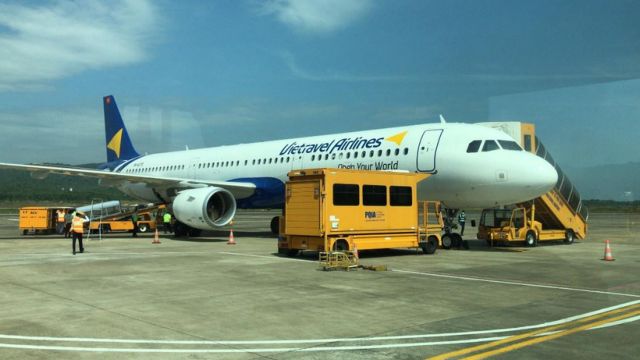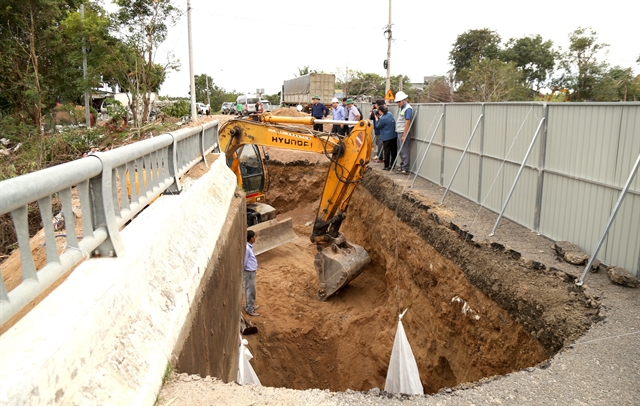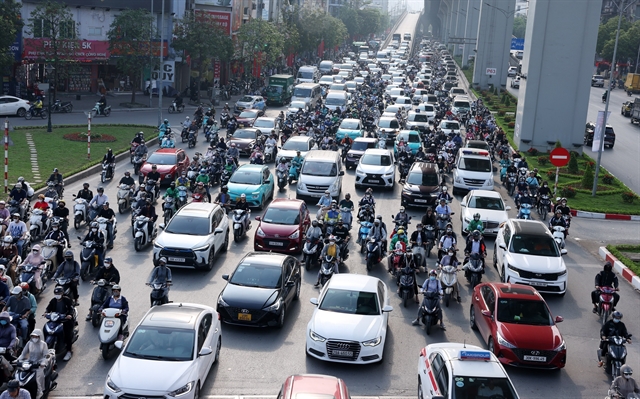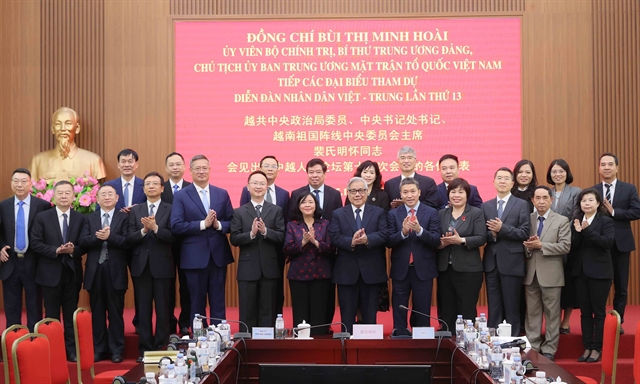 Politics & Law
Politics & Law
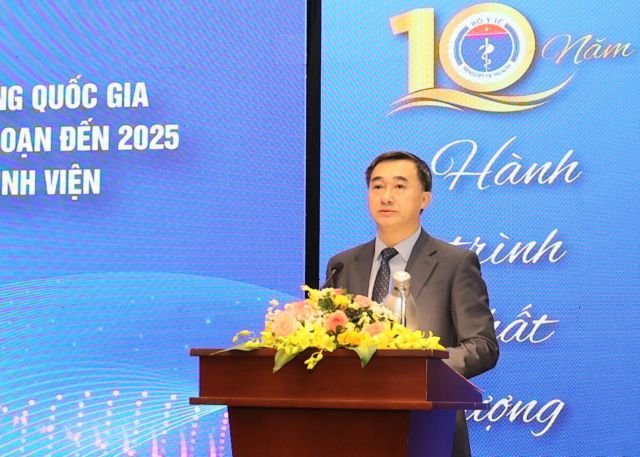
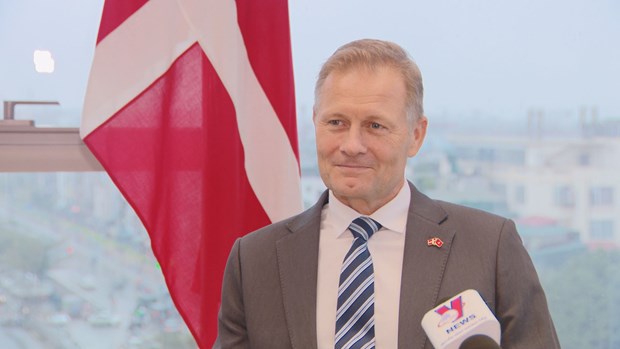
|
| Danish Ambassador to Việt Nam Nicolai Prytz. VNA/VNS Photo |
During an interview granted to the Vietnam News Agency on the occasion of New Year 2024, Danish Ambassador to Việt Nam Nicolai Prytz stressed Denmark is ready to support the nation in green transition.
He also expressed his belief that the Green Strategic Partnership (GSP) will open a series of new opportunities and raise Denmark-Việt Nam bilateral relations to a new level.
What do you think about Việt Nam's economic development in 2023? In your opinion, what should Việt Nam do to maintain economic growth in the future, as the global economy is predicted to continue facing risks and challenges?
In many ways, 2023 was a difficult year for the global economy and, as a largely export-driven economy, Việt Nam obviously has not been immune from that – for example, exports to the European Union and the USA were down by almost 10%.
This has primarily impacted the manufacturing sector, but has also influenced private consumption in Việt Nam. Even though some improvements did occur in the last part of the year, it seems reasonable to assume that some of these challenges will persist 2024 – but possibly to a lesser extent.
However, with an estimated economic growth of about 5% in 2023, it is safe to say that Việt Nam – in spite of the abovementioned headwinds – has done quite well compared to other countries. In fact, it is among the best performing economies in the region and the world.
Moreover, I am sure that many of these challenges are of a cyclical nature and that the Vietnamese economy soon will be back on a plus 6% growth trajectory, as external demand recovers and gains further steam. The increasing inflow of FDI points to the same direction, as it reflects foreign investors' high confidence in future economic growth in Việt Nam.
All this being said, there are still things Việt Nam could benefit from doing, in order to address some of the structural challenges and make it even more attractive for foreign investments. This includes improving the business environment and increasing productivity, upskilling of the labour force, and digitalisation.
In order to fuel continued economic growth, Việt Nam also needs to develop its energy sector. Energy security and affordability are legitimate concerns of the Vietnamese Government, but this needs to go hand in hand with the green transition.
To that end, Việt Nam needs to make reforms and adopt firm policy measures in order to create an enabling environment for foreign investments that can finance the green transition. Failure to do this could negatively impact future FDI attraction, as access to renewable energy is becoming increasingly pivotal for foreign investment decisions.
Việt Nam and Denmark have announced the establishment of the Green Strategic Partnership which opens a new chapter in the two countries' more than 50-year cooperation relations. How would you assess the prospect of bilateral cooperation relations after the Green Strategic Partnership is established?
Denmark and Việt Nam already have a very fruitful and mutually beneficial partnership cooperation, but I believe that the Green Strategic Partnership (GSP) will open a series of new opportunities and raise our bilateral relations to a new level.
On the political level, we expect to see an increased number of high-level visits between Denmark and Việt Nam, which should intensify our policy dialogue on important topics like climate change.
On government-to-government technical cooperation, we already have a strong foundation through our years of fruitful cooperation within our five strategic sectors: energy, food and agriculture, health, education and statistics. This will obviously continue and be further enhanced by the GSP.
Finally, on the business-to-business level, the Embassy will continue serving as a bridge to encourage potential Danish companies to invest in Việt Nam, particularly in the green transition.
Việt Nam is only the fifth country that Denmark enters into GSP with – the others being India, Indonesia, the Republic of Korea and South Africa – which reflects the very high priority we give to our bilateral relations with Việt Nam.
One can argue that we might have different starting points when it comes to the green transition and we are in different stages of our development, but that does not change the fact that we both aim for a common goal: A green, just and sustainable globe.
This also means that Denmark within the framework of the GSP will continue to support Việt Nam in achieving both its goals of becoming a high-income country by 2045 and reaching net zero carbon emissions by 2050. As the Danish experience has shown, these two goals can indeed go hand in hand.
Green transition is a current global trend, and Việt Nam has set the target of achieving net zero emissions by 2050. How do you assess Việt Nam's efforts to reach that target? How can Denmark further support Việt Nam in this field?
At COP 26, Prime Minister Phạm Minh Chính of Việt Nam committed to achieving net-zero emissions by 2050, which sent a clear and positive signal to the world regarding Việt Nam's direction and determination towards low-carbon and sustainable development. Since then, the Government of Việt Nam has taken important measures.
In December 2022, Việt Nam entered into the Just Energy Transition Partnership (JETP) with the International Partnership Group that consists of the G7 countries, the European Union, Denmark and Norway.
Subsequently, at COP28, Việt Nam launched a Resource Mobilization Plan (RMP), which is an important first step in the implementation of the JETP as it includes an assessment of priority investments. It also recognises the need to create an enabling environment that can attract the vast amount of private investment needed for the green transition.
Finally, it should be mentioned that the Vietnamese Government in the middle of last year finally approved Power Development Plan 8 (PDP8), which clearly prioritises renewable energy as the source of energy to power Việt Nam's future growth.
The challenge now is to convert all these commitments into something much more tangible and real - like implementation plans and legal frameworks. Việt Nam is undoubtedly well positioned to take on this task, but it will require an enduring commitment from all relevant ministries.
To this end, in all modesty, I do believe that the ongoing Danish-Vietnamese Energy Partnership Programme is very useful, as our cooperation focuses on relevant aspects of the energy transition – e.g. long-term planning of the energy system, efficient integration of wind and solar energy into the national electricity system, as well as improving energy efficiency in the industrial sector.
As mentioned before, our two countries might be in different stages when it comes to the green transition and Việt Nam, admittedly, is a much more complex country than Denmark (in terms of size, population, geography, etc.). Danish solutions and ideas might therefore not always be directly applicable in Việt Nam – but I do believe they can serve as useful guidance and inspiration.
Not only the two Governments but the business communities of both countries are also strongly engaging in the green transition. What does Việt Nam need to do to attract more foreign investors, like Danish ones, in this transition?
The private sector plays a vital role in any country's green transition. It is private investment, not public funding, that will be the main (financial) driver for this transition.
However, in order for this to happen, the Vietnamese Government needs to approve clear ambitious policies and legal frameworks that will create an enabling environment for potential investors in Việt Nam’s green transition.
To exemplify this, Danish investors are ready to invest huge amounts in offshore wind projects in Việt Nam that potentially can power millions of local households and improve energy security, while avoiding hundreds of million tons of CO2 emissions – but investors need certainty.
With clear policies and a proper legal framework in place, I have no doubt that Việt Nam could become a regional hub for offshore wind energy generation and also play a crucial role in the regional supply chain for these kinds of projects, as it would bring along massive private sector investments in both local production and re- and upskilling of labour.
Even if we look beyond investors in the energy transition, there should be a strong incentive. As earlier mentioned, without access to renewable energy it will be difficult for manufacturers to achieve a carbon neutral footprint, which increasingly seems to be an absolute prerequisite for offsetting products – e.g. textiles, footwear and electronics – in important markets like the European Union and the USA.
The Lunar New Year (Tết) festival is a very important occasion for Vietnamese people. How do you feel about the Tết atmosphere in Việt Nam?
I only assumed my position as Danish ambassador to Việt Nam in September 2022, so I have only spent one Lunar New Year (Tết) here. Nevertheless, even this modest experience left me with a very positive and profound impression.
Even as a foreigner, it is hard not to feel happiness when you see how families meet and spend time together, while praying for their ancestors, good health and prosperity. Tết last year also added a culinary dimension to my experience in Việt Nam, as I had plenty of traditional food – even ‘chưng’ cake. VNS

